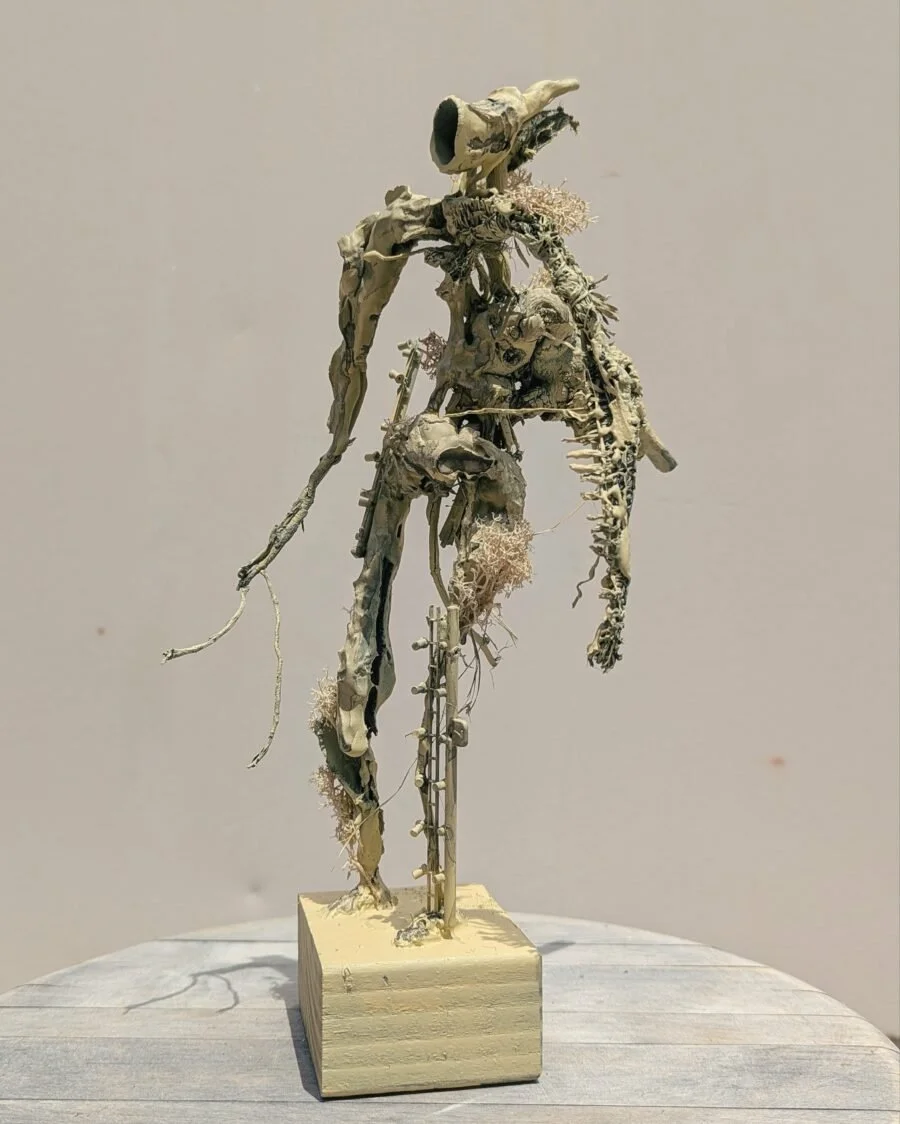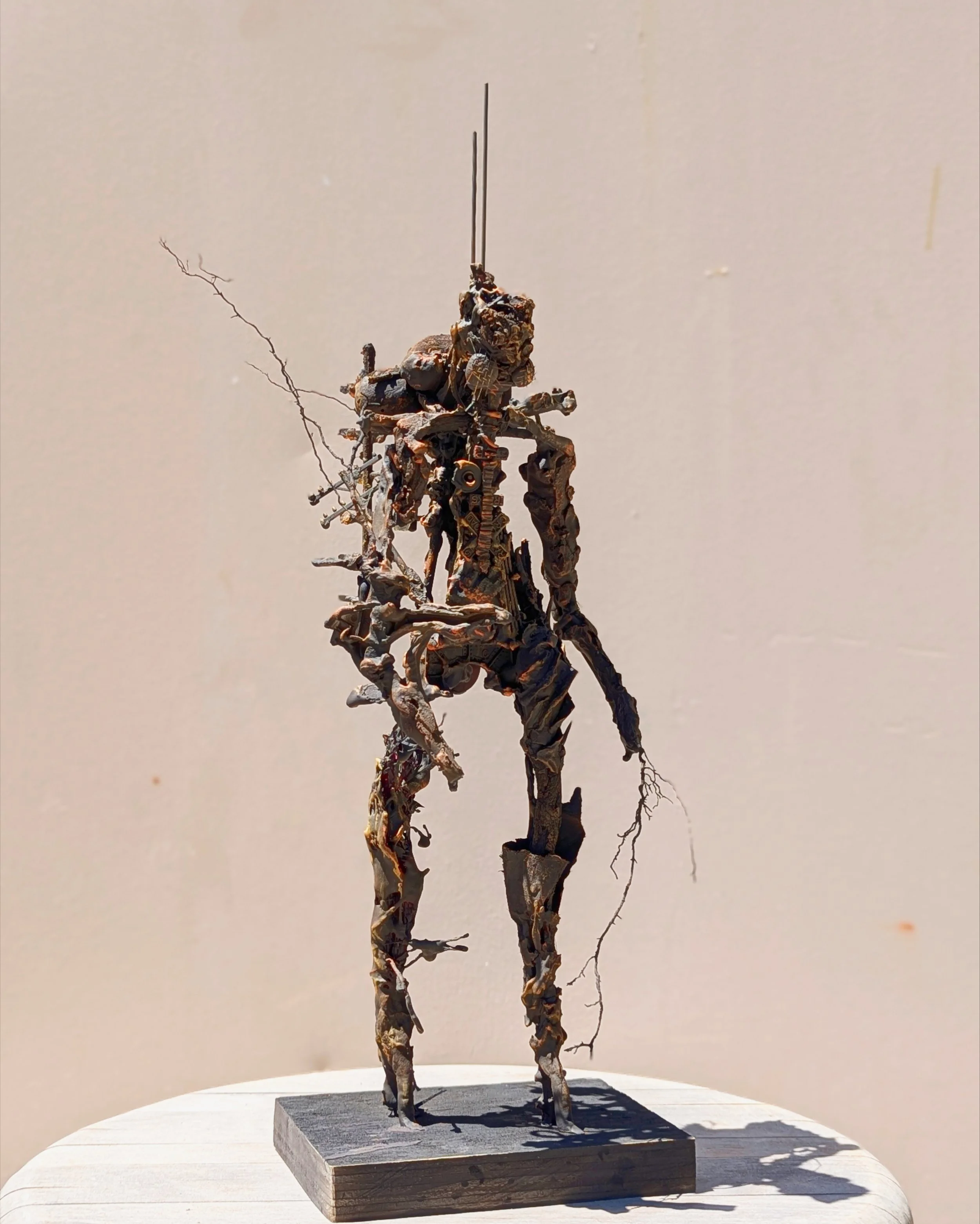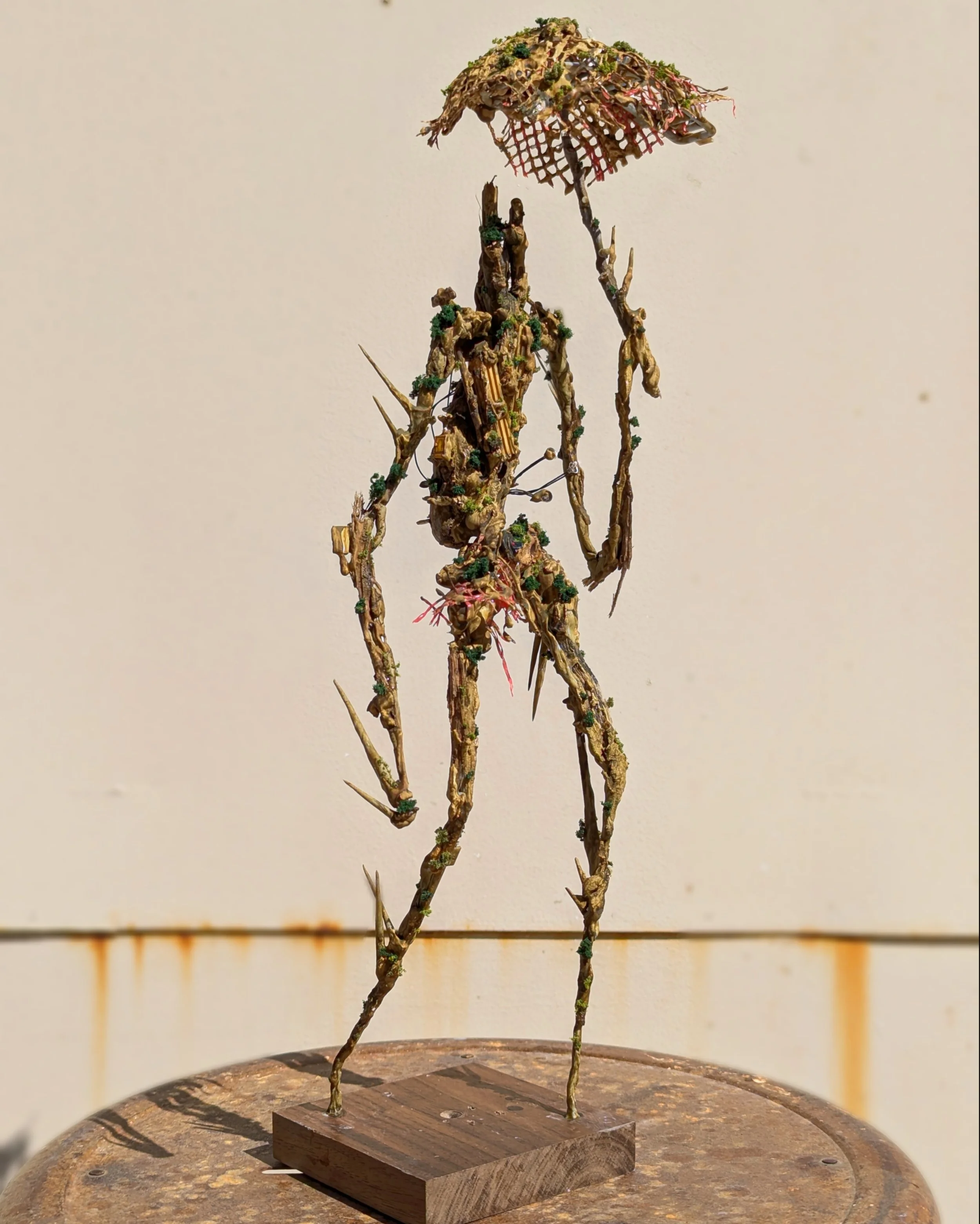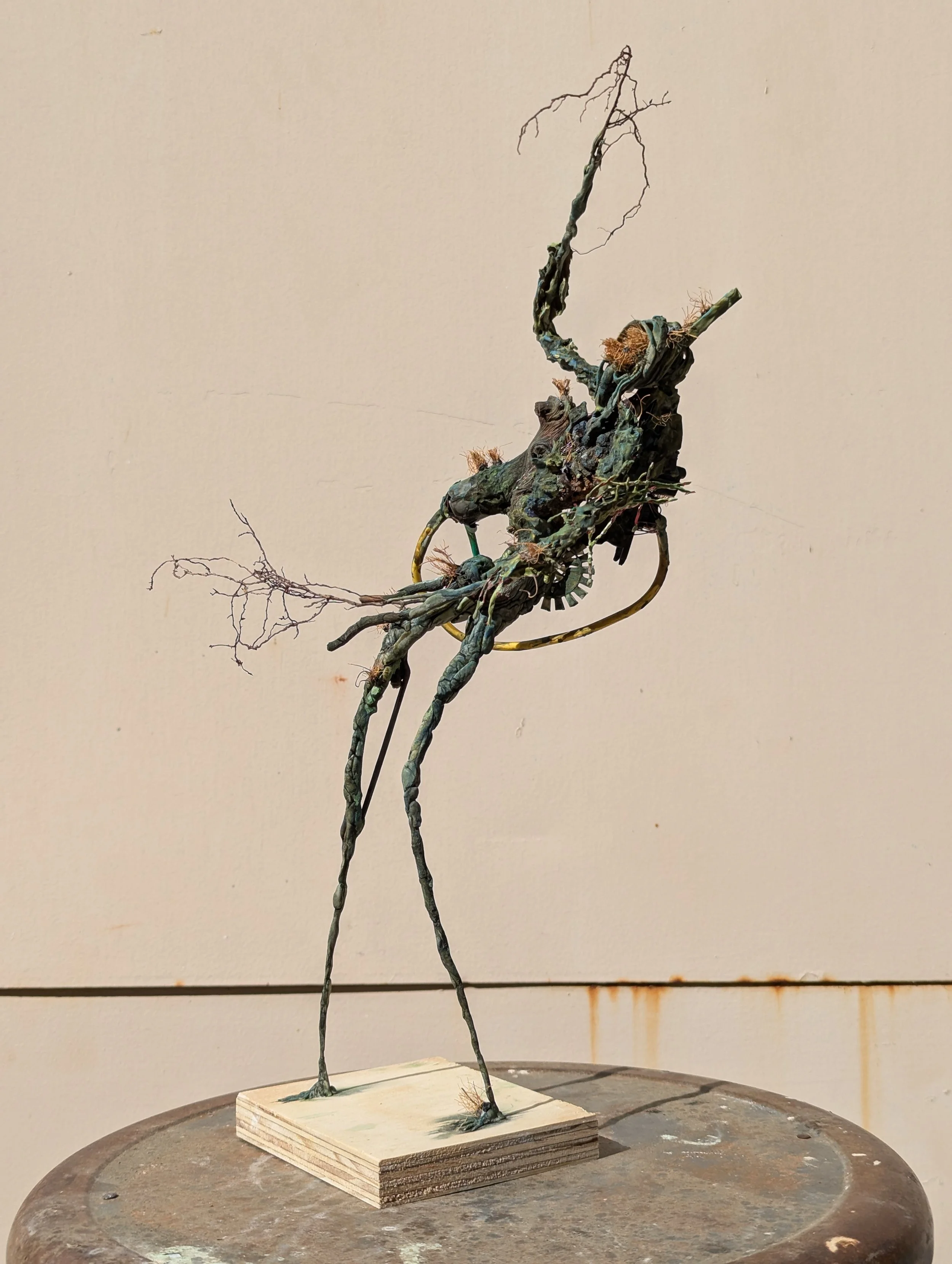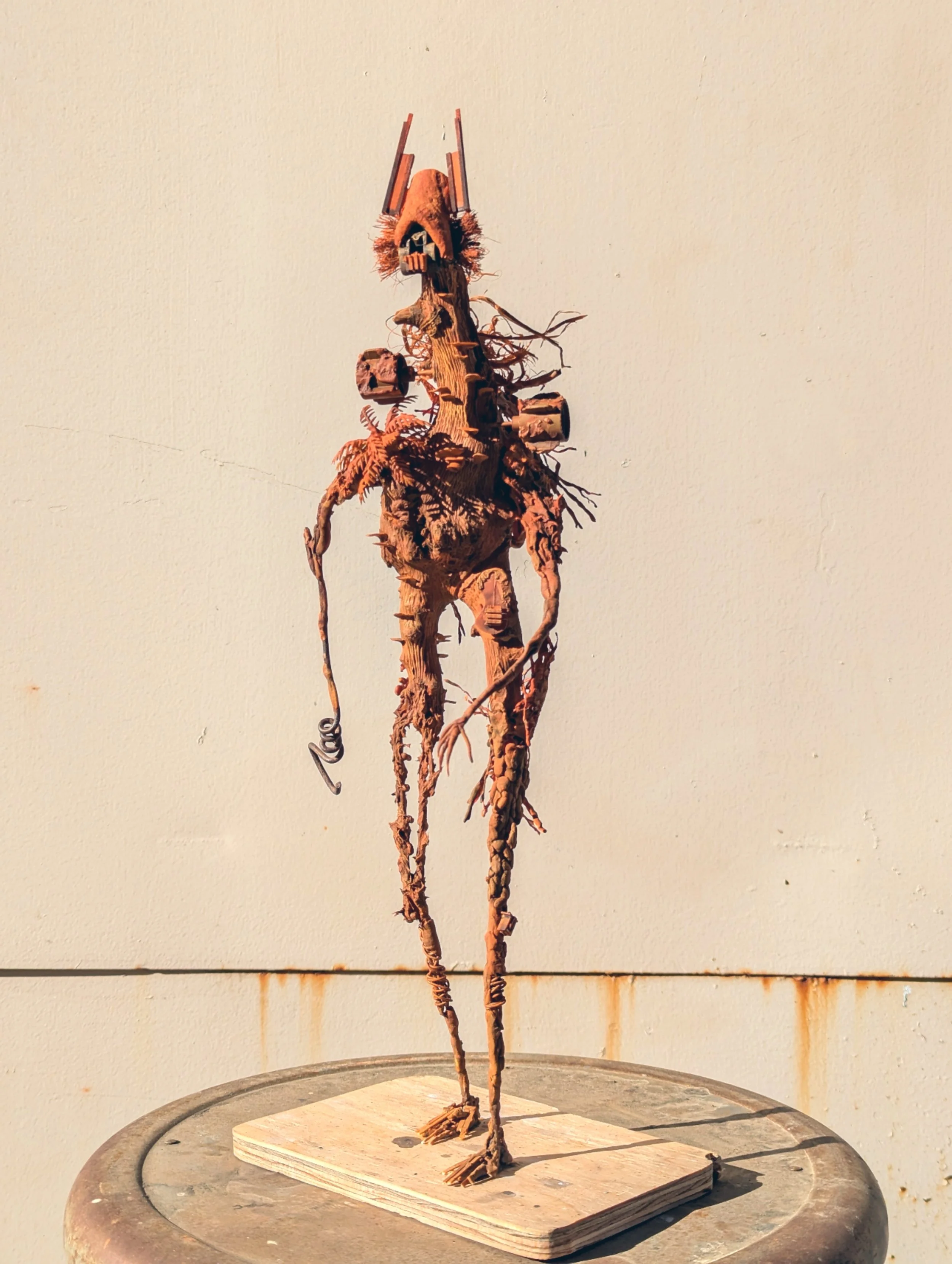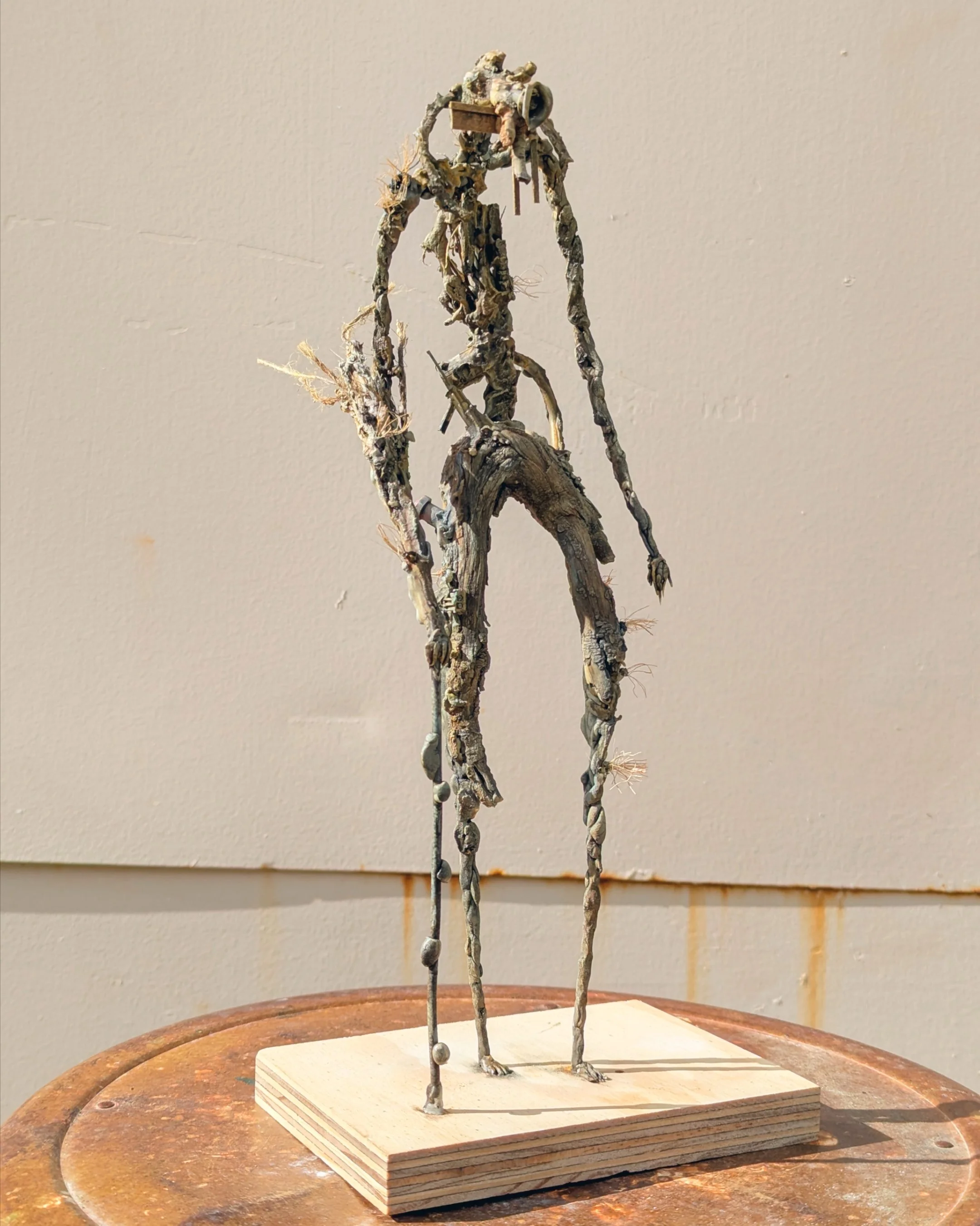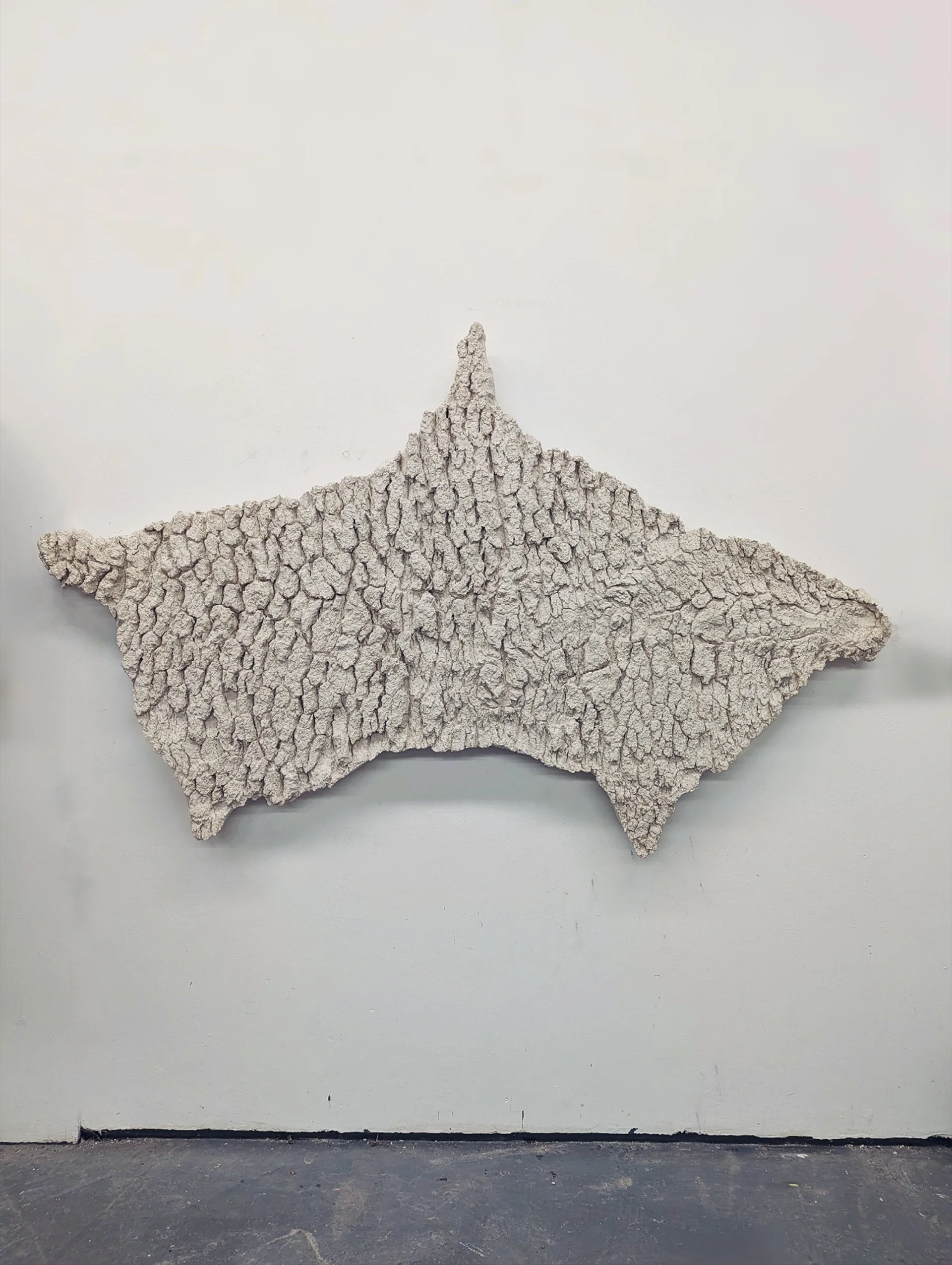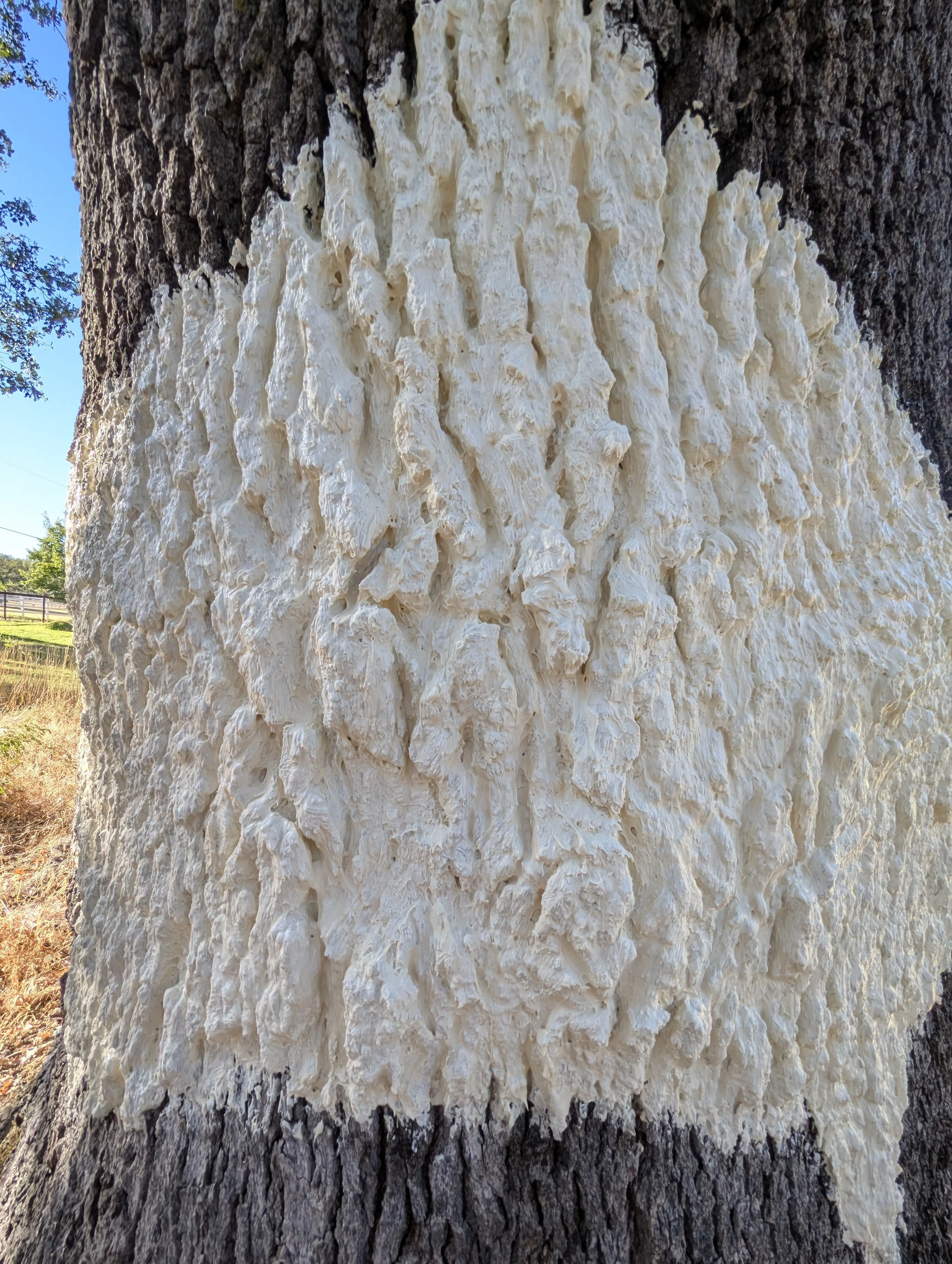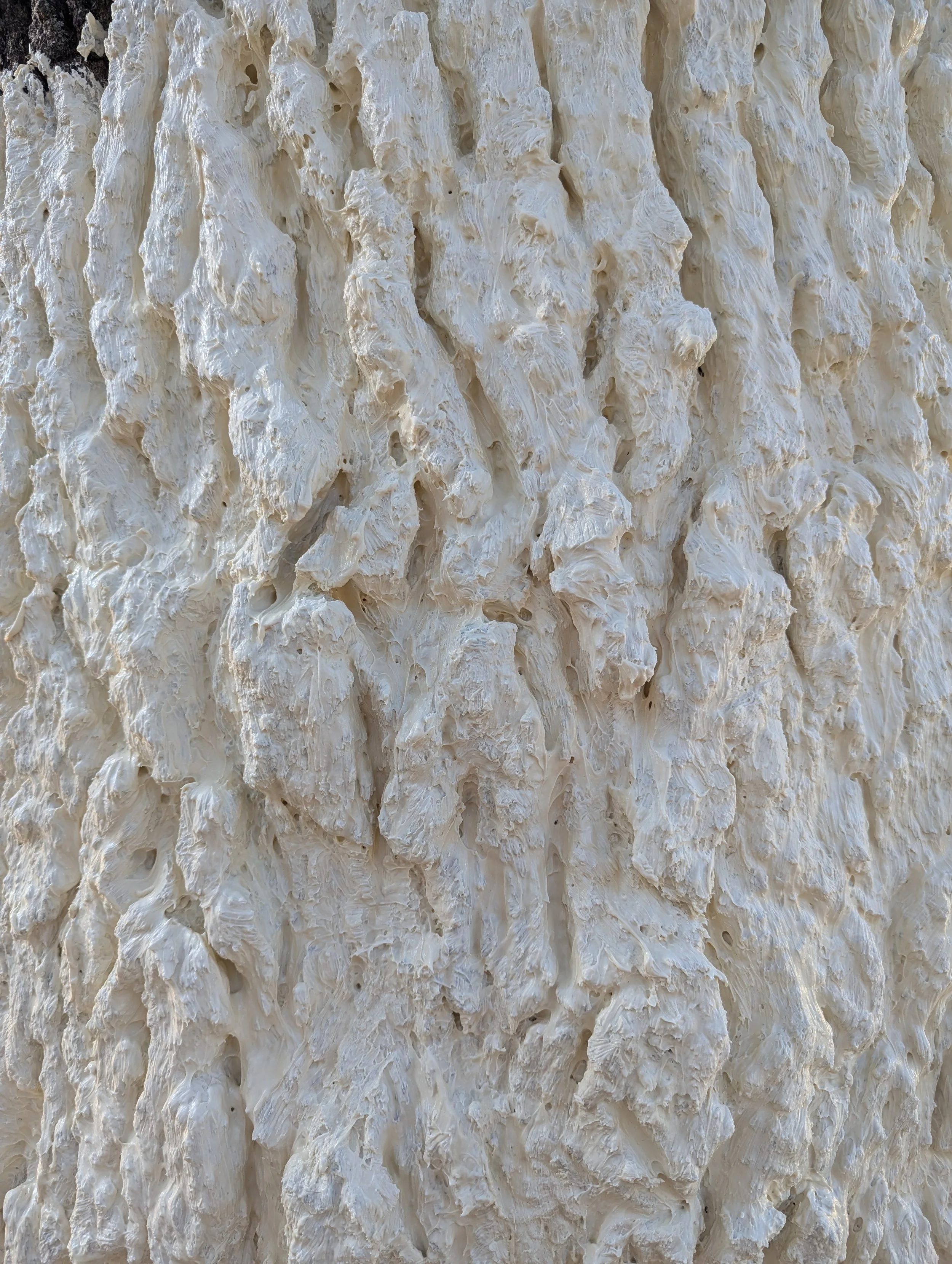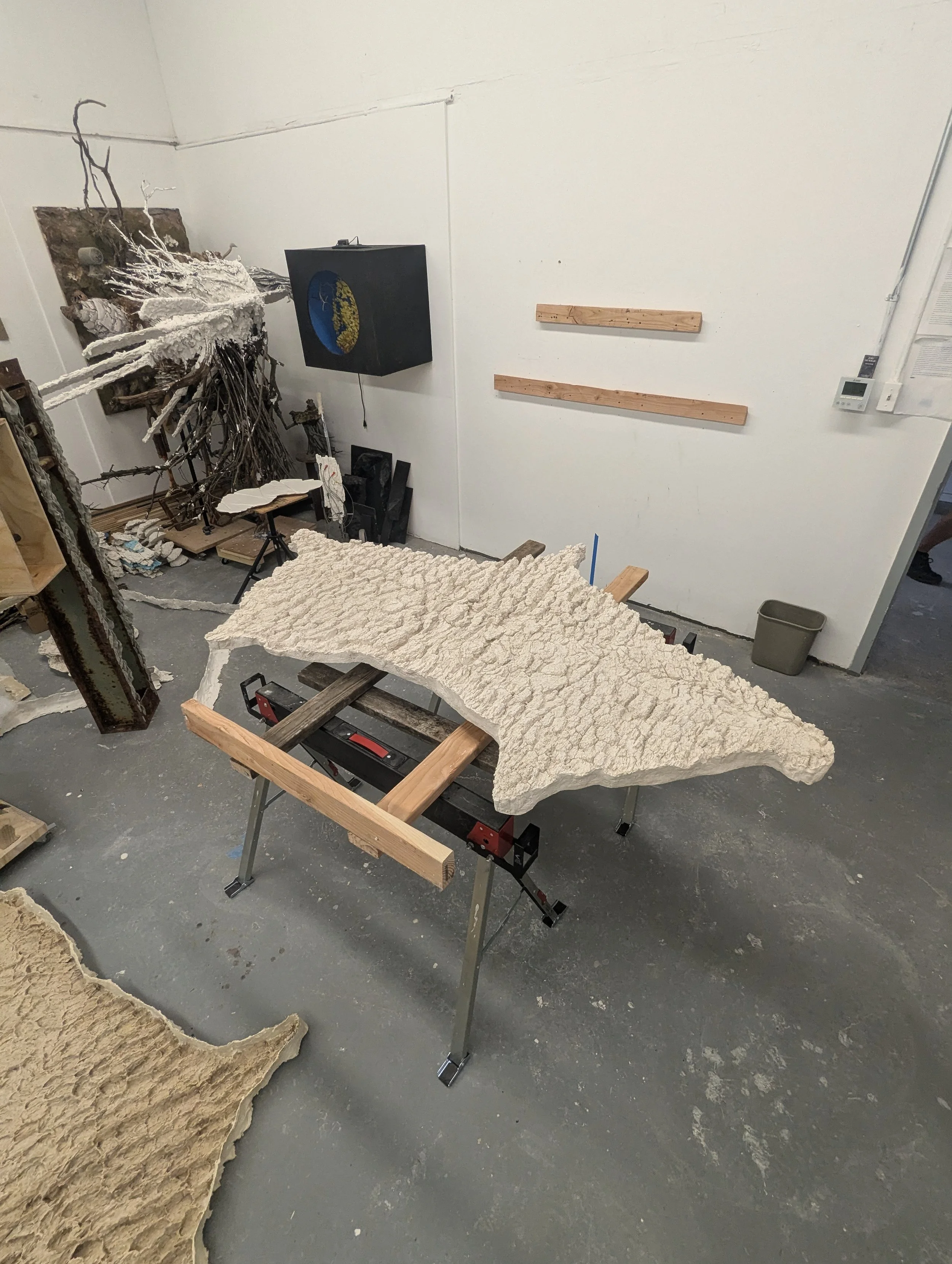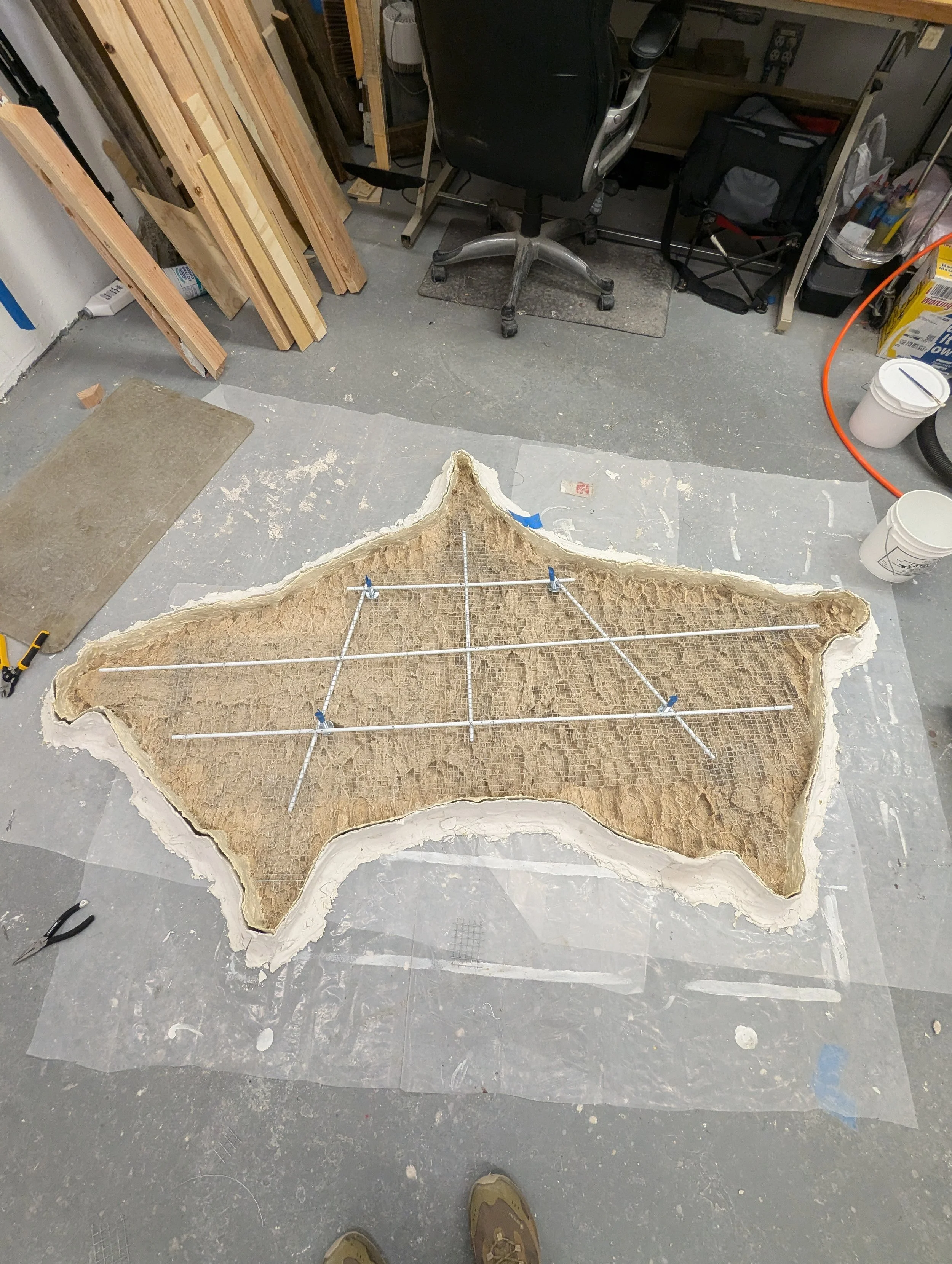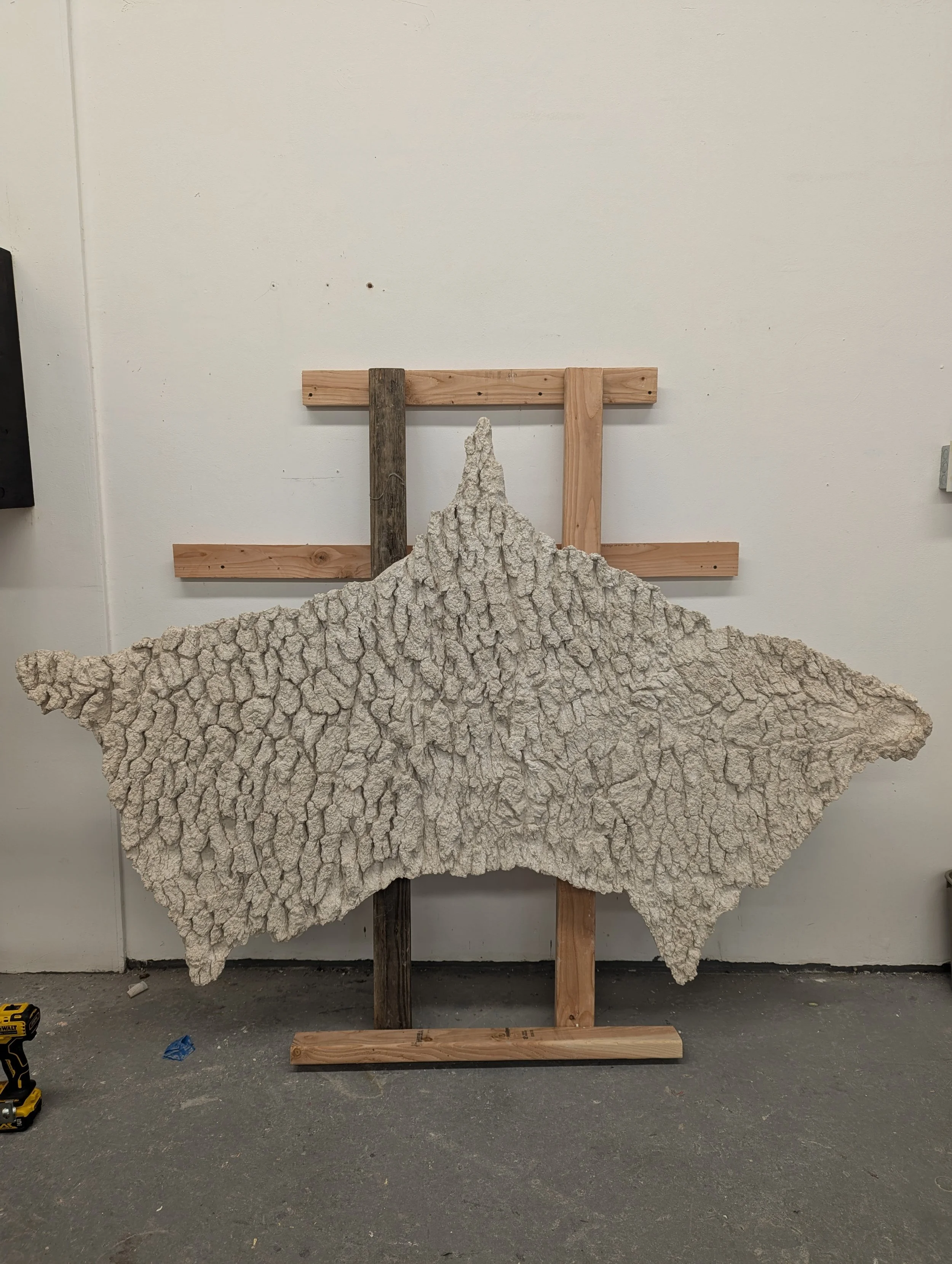
Maquette by Joel Murnan
Sculpture April 25 2025
Intro
Joel Murnan is an American sculptor and MFA candidate at the University of California, Davis. Rooted in childhood memories of pastoral landscapes, his work investigates themes of land, control, and ecological vulnerability.
Murnan assembles rotting wood, metal, found objects, and synthetic materials into hybrid, creature-like forms. These sculptures speak about decay, persistence, and transformation, this is his own response to nature. Influenced by mythology, medieval maps, and today’s ecological crisis, he sees monsters as figures that reveal how we fear and try to control the land.
Maquettes
Maquettes #1
9″ x 4″x 4″ wood, wire, foam, epoxy clay, plaster, found objects, mandarin bag, and latex paint
Maquettes #2
16″ x 5″ x 5″, wire, plaster wood, sticks, model sprues, spray foam, spray foam spray tip, mandarin bag, roots, epoxy clay, oak gull, card board, plaster, acrylic.
Maquettes #3
14″ x 8″ x 6″ wood, sticks, epoxy clay, plaster, model parts, copper wire, wire, mandarin bag, lichen, acrylic paint.
Maquettes #4
14″ x 8″ x 6″ wood, sticks, epoxy clay, plaster, model parts, light bulbs, wire, mandarin bag, flock, acrylic paint.
Maquettes #5
14″ x 8″ x 6″ wood, sticks, epoxy clay, plaster, model parts, wire, garbage, toy monster truck, mandarin bag, flock, acrylic paint.
Maquettes #6
14″ x 8″ x 6″, wood, sticks, epoxy clay, plaster, model parts, plastic, wire, mandarin bag, wire mesh, welcome mat, cardboard, flock, acrylic paint.
Maquettes #7
18″ x 6″ x 5″, wood, sticks, epoxy clay, plaster, basswood, model parts, wire, mandarin bag, wire mesh, cardboard, texture paste, acrylic paint.
Maquettes #8
18″ x 6″ x 5″, wood, sticks, epoxy clay, plaster, basswood, model parts, wire, mandarin bag, wire mesh, cardboard, texture paste, acrylic paint.

From the Artist
“The monster in nearly every culture symbolizes collective uncertainty and shapes our perception of the landscape. These sculptures channel the monster or Daemon, as the manifestation of our temporality through elements such as rotting wood, forgotten mechanical tools, and pieces of discarded trash.
Daemons represent the unknown, marking boundaries and defining our relationship with land and ecology. Monsters are represented on medieval maps as symbols of uncharted territories, asserting control over unknown lands. My work uses monsters as metaphors to examine global and personal relationships with land, distilling feelings of scarcity, limitation, and a desire for ecological balance.
Modern ecology is intertwined with human intervention. As catastrophic as these realities may seem, there is an odd beauty in the integration of manufactured elements within the wild. The landscape fluctuates like a dance of particles—a continuous flow of energies and forms in constant motion dissolving and reforming. In my work, found objects are joined together. These components unite and become endowed with life, like a Golem.
Monsters are potent symbols of our ecological fragility; they signal a call to action. My research explores the interconnectedness with the landscapes we inhabit, examining both our fears and hopes of the world around us.”
Maquettes #2
16″ x 5″ x 5″, wire, plaster wood, sticks, model sprues, spray foam, spray foam spray tip, mandarin bag, roots, epoxy clay, oak gull, card board, plaster, acrylic.
Oak Hide by Joel Murnan
Sculpture April 25 2025
Oak Hide
Oak Hide is one of Joel Murnan’s most subtle, ironic, and unsettling works—a play of material, a play with optical illusion. Cast from the bark of a living Valley Oak, the piece resembles an animal hide pinned to the wall, like a hunter’s trophy. But the prey here is not a beast—it’s the tree.
Using layers of liquid latex to mold the tree’s surface, Joel transforms something living and singular into something flattened and repeatable. The bark, once textured and tactile, becomes a ghostly impression—soft, pliable, almost skin-like. The irony runs deep: what looks like respect for nature also feels like a sign of control. In this work, Joel seems to invite viewers to reflect on how we consume and preserve the natural world, often in the same gesture.
Interpretation
Joel may have been driven by a search for his role as an artist in relation to nature. Perhaps it was also his curiosity about the natural world or a desire to document its presence through his work. In any case, this led him to begin a series of material experiments focused on trees. He started applying liquid latex onto pieces of bark, making molds that captured the texture and form of the tree’s surface. As Joel described: “I brushed it onto the tree bark and built up layers over several days as it dried. Once it was ready, I could peel it off—and obtain this big, stretchy rubber band, super elastic. Then I poured Plaster of Paris into the mold, so I could create multiples.”
Through this process, tree bark, something as unique as a fingerprint, became a replicable object. To me, this transformation feels particularly absurd, both as a product of technological advancement and as a result of humanity's attempt to tame nature.
Joel clearly excels at using irony in his language. After a few successful experiments, he applied latex to a living Valley Oak tree, ultimately harvesting a large mold. The mold was then cut and filled with plaster, taking the shape of what could be mistaken for an animal hide. When we entered his studio, the "hide" was hung on the wall by the door, like a hunter's trophy—only this time, the victim was not an animal, but nature itself.
Full Article on the bottom of this page.

Outro
From monsters to tree hides, Joel experiments with different materials and forms to explore the vast theme of human relationships with the land.
“A part of me finds peace in that—the idea that nature can just exist and thrive without us. But at the same time, we’re part of it too. We are nature.”This was how Joel put it when we spoke with him, continuing, “How do I find myself in all of this? And how do I find our history in all of this? Because there was a time that we were all coexisting, and now it’s shifted so much.”
Maquettes #3
14″ x 8″ x 6″ wood, sticks, epoxy clay, plaster, model parts, copper wire, wire, mandarin bag, lichen, acrylic paint.
Credits
By
More works on
Interpretation written by

Article on Joel Murnan
April 25 2025

